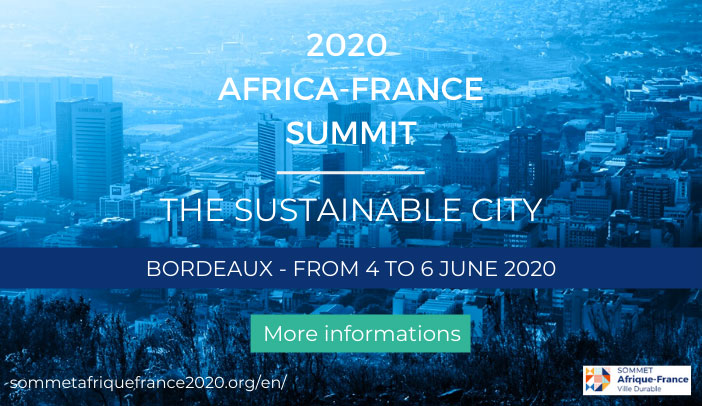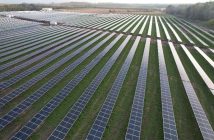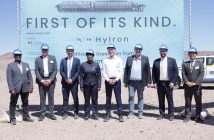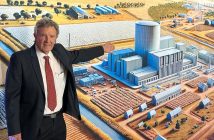Ambulatory surgical procedures are routine in the U.S., but that’s not the case for most of the world. According to Dr. Michael Marin, head of surgery at Mount Sinai Hospital in New York City, 5 billion people have no access to safe and affordable surgery procedures, a reality that in 2010 led to nearly 17 million deaths across the globe.
In search of a new model for surgical facilities that could serve local communities—a model that would be independent and self-sustaining, outside of the context of large urban hospital complexes—Dr. Marin reached out to Kliment Halsband Architects in New York, a firm that had no experience in healthcare design. Recently I talked to firm principal Frances Halsband about how the project came about, and what she and her team learned in the process.
Michael J. Crosbie: How is this project atypical for your firm?
Frances Halsband: We’d never done a project outside the U.S. Nor had we ever worked in healthcare. Our client, Michael Marin, came to us and we told him, “We don’t know anything about healthcare facilities.” He said, “That’s why I am choosing you.” This was to be on a site with no infrastructure for water, electricity, waste disposal, internet. He said he needed an architect to think about things in a completely new way, an opportunity for a fresh approach. He wanted to rethink everything about designing a surgical facility. He came to our office (his son works at our firm) and gave a presentation about why we should do this project. His argument was that there are many examples of clinics in underserved areas, but they give out pills. Surgery is seen as too complicated, too difficult. Even simple surgeries—like setting bone, fixing a hernia—are thought to be impossible in a place like this. But if we could get this right, potentially millions of lives could be saved worldwide. So we were in.
MJC: Why did he think you were the right firm?
FH: Like other big hospitals, Mount Sinai works with giant architecture firms that specialize in healthcare. They are used to thinking about healthcare design in a certain way. He believed that this project needed an architect to come up with simple ways of solving problems not supported by the complex and costly healthcare infrastructure of the U.S. For example, he told us that many pieces of equipment at Mount Sinai were only possible to acquire because Medicare would pay for them. He figured if we could simplify a solution in Kyabirwa, Uganda, we could repeat it in other places. He wanted to use this project to rethink what are the basics needed to do surgery in a place that lacked such infrastructure—the easiest way to deliver medical care.
MJC: How did you approach such a design challenge?
FH: We started as every good student does: by asking questions. How do you do this procedure? Where do you go? What are the logistics? How are the spaces used? Who is using them? We thought at first that maybe the design prototype should be modeled on a military field hospital that you just plopped on the site. That was a dead end, because people in Kyabirwa were sophisticated about what they needed. Flying in a ready-built facility from far away wouldn’t be appropriate, and it would be pretty difficult to get there in terms of cost and logistics.
MJC: So how did the design evolve?
FH: We defined three different modules that could be replicated. First is an open courtyard surrounded by check-in and offices. The space needs to be generous, because when people come for surgery, they bring the whole family. There’s minimal nursing staff, so your family member cares for you. The next module is where a patient is prepared for surgery and returns post-operation for recovery. And the third module is the operating room, with clean rooms and other spaces to support it.
MJC: A distinctive feature of this design is the canopy with the solar panels. How did that come about?
FH: We realized that this architecture should have an indigenous quality—that people should recognize it as something familiar. We looked at banana plants as a precedent for how to gather sunlight but also to provide shade underneath. We extended the metaphor to create solar leaves for shade, and to generate power. We placed buildings made of local brick under the solar shades. This architecture grows out of the local vernacular—everything is bright orange and red. The buildings are typically of sun-baked brick waterproofed with a covering of stucco. We chose to use bricks of our own design made with brick molds, in a local kiln, which could be exposed.
MJC: So the construction activity added to the local economy, is that right?
FH: That’s right. We spoke to Joe Mizzi, who created a foundation called 14+ to build schools in Africa. He said it is essential to have someone there who can communicate to us what is happening on the site, and involved with making decisions as questions arise. We found that person in George Everest, an English surveyor, who lived there and functioned as owner’s rep, general contractor, who understood our drawings and design intent, and knew the local culture. George was a godsend. He hired the workers, clothed them, found places for them to live, organized the construction crews, taught people techniques and skills. George used a drone and flew it through the project every week, showing us the construction in detail. It turned out to be possible to understand what was happening there without ever going to the site. I felt with the drone we had just as good a grasp of the details as we would for a building under construction in New York.
FH: On opening day in September, Mount Sinai live-streamed the first surgical procedure—a hernia operation—that could be monitored by surgeons in New York. By then they had WiFi and fiber-optic cable. It was thrilling, if a little too much information for our group of architects and donors watching. On a related note, we’re designing the College of Global Public Health at New York University, and a group of their graduate students have been following the project. We invited students to observe what was happening. Some students then applied for a grant to visit the surgical facility, interview townspeople, and see how it is serving the community. They will be going back again, and we have just heard that one of them is hoping to work there, a wonderful possibility.
MJC: Has this project half a world away changed how you practice architecture?
FH: It’s made us feel more free to question the premises of a design project, especially for project types we have a lot of experience with. Re-vision it! For this project we had a small design team. They wanted to be involved in something that was not only humanly scaled but socially useful, serving the community. In our firm, the project has generated interest in working on similar projects. And having the NYU graduate public health students involved here has been eye-opening, because they asked questions about the design that we might never ask ourselves. That has reminded us of the value of cross-disciplinary collaboration.
Photo Gallery
Author: Michael J Crosbie
This article was first published in Arch Daily in partnership with Common Edge. It is republished with permission.












.jpg?1575277082)







